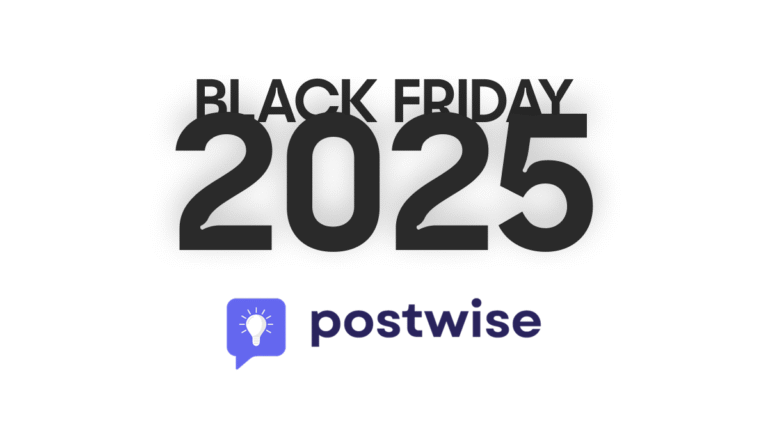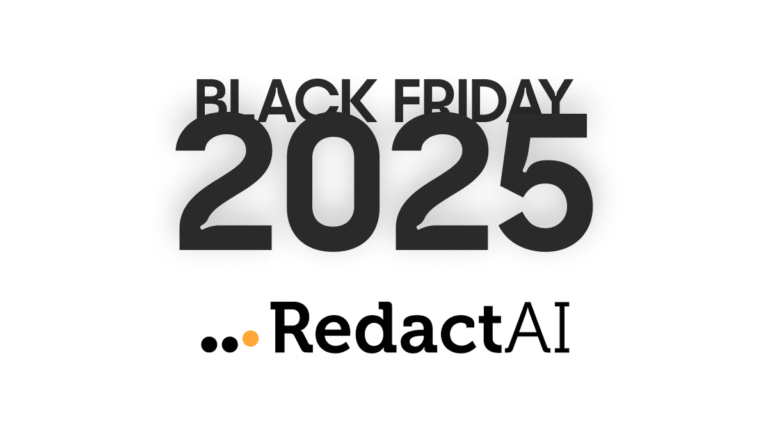The average customer reads 10 reviews before trusting a business.
Have you ever Googled your brand or business and cringed?
The truth is that your online reputation is the first interaction between your business and potential customers. Having a bad online reputation is a silent business killer.
You can still shape the right image for your business through Online Reputation Management (ORM).
But what is ORM, and what are the best practices for turning your brand into a legend?
What Is Online Reputation Management?
Online reputation management is tracking and shaping how your brand or business is seen by existing or potential customers on the internet.
ORM aims to ensure a positive image, build trust, and mitigate potential risks to reputation.
This includes handling negative feedback, minimizing unfavorable search results, and addressing false information about your brand or business.
Why Is ORM Important?
Most first-time customers form their impression about your business or brand based on what they find online. A good online reputation will turn leads or website visitors into paying customers, while a negative reputation will deter potential customers or opportunities.
And there’s no getting away with a bad online reputation.
95% of customers check online reviews before buying something, and positive reviews can increase customers’ spending by 31%.

More reasons that make ORM crucial for your business:
1. Customer Trust
A solid online reputation can help you build and maintain trust with existing and potential customers. Positive reviews and feedback can inform them about your business’s quality and reliability, leading to more customer loyalty and repeat business.
2. Brand or Business Perception
ORM enables you to shape how the public perceives your business. Actively manage your online reputation to ensure the available information reflects your business values and mission.
3. Competitive Advantage
You can get an edge over your business competition through a positive online reputation. Customers might compare similar businesses or products and choose the one with a good reputation over one with negative reviews or poor online presence.
4. Crisis Management
You can mitigate the impact of negative reviews or events and protect your business through ORM. Continuously tracking potential issues or negative trends allows you to do this.
Potential customers can always find lousy customer experiences shared through blog articles, social media posts, or reviews.
You can step in and address the problem before it turns into a crisis that could cause permanent damage to your brand or business.
5. Business growth
The more you improve your business reputation, the more customers you get.
Keeping a steady flow of positive feedback will make people notice your business or product and turn them into new leads or paying customers.
6. Important feedback
You get valuable feedback through online reputation management. If a complaint repeats, there may be an underlying issue that you need to fix.
7. Expanding opportunities
Customers aren’t the only ones who check your reputation before spending money. Potential partners, business investors, and employees also carefully analyze your online reputation.
ORM Media Channels
There are 4 main digital media channels that you have to monitor and engage through:
1. Owned Media
Your business website, social media profiles, newsletter, or any other media channel you completely control is known as owned media.
Publishing high-quality content for your website and social media accounts helps position your business as a trustworthy source within your industry.

2. Earned Media
Earned media represents any free coverage that your brand, business, or product receives. This could include blog articles, forums, industry-specific publications, and reviews on a third-party website like Google, Trustpilot, or Yelp. Building a foundation of positive mentions can help your business build a strong reputation. This is why you should constantly monitor and stimulate earned media opportunities.
3. Shared Media
Shared media represents any content on social media platforms about your business or product.

Shared media can turn away clients through negative reviews, complaints, low ratings, and unfavorable mentions. This is why you should closely monitor social media and quickly address issues to maintain an excellent online reputation.
4. Paid Media
Paid media refers to any online content that requires payment for a feature. Channel includes ads, sponsored posts, influencer marketing, and more.
Paid media is one of the most straightforward areas of online reputation management because you decide what to invest in. It allows you to drive attention to specific parts of your business or product by controlling the message.
How to Manage Your Online Reputation
Not managing your online reputation can have serious consequences for your personal or business image. Here’s how you can ensure your business success through ORM:
1. Check Your Business Online Reputation
First, you must determine how clients perceive and talk about your business or product. Launch your browser in incognito mode and search for your business. Then, check the ratings, SERP position, reviews, and news articles. If you live in a region different from your existing clients and target audience, you should use a VPN for accurate results.
2. Identify Your Audience
If you’re selling to everyone, you’re selling to no one.
Knowing who your audience is will help you better target your efforts and improve your social media presence. You’ll also know which platforms work best to communicate with them and how to adjust your message.
If you don’t know where to start, use lemlist’s free persona buyer generator.

3. Maintain Professional Social Media Profiles
Set up and manage professional profiles across different social media platforms. Ensure information is complete, accurate, and up to date. Also, control who can access your social accounts, post content, reply to comments, etc.
4. Track Brand Mentions
Minimize potential damage by monitoring brand mentions. Quickly address any risk to your brand reputation, such as negative reviews, misinformation, or even brand hijacking attempts. You can set up a Google alert for your brand name or use an ORM tool for comprehensive results.
5. Keep a Consistent Brand Voice
Shape how existing and potential customers perceive your brand or business by keeping a consistent voice across multiple channels. Here’s how consistent branding helps your business:
- Reinforces brand identity.
- Makes your brand easier to recognize.
- Increases engagement.
- Build customer loyalty by creating a sense of familiarity.
- Adaptable across multiple platforms.
6. Set Up a Crisis Management Plan
Crises are inevitable, and they quickly propagate online. However, you can protect your online reputation by setting up a crisis management plan.
Here’s how you can avoid compromising your online reputation:
- Monitor Google and social media mentions so you can quickly identify the sentiment around your business.
- Stay current with industry news, as unforeseen events or new legal requirements might cause unrest among your clients or business partners.
- Establish a team of people who can provide expertise and resources to handle the crisis effectively. To avoid severe damage to your online reputation, ensure the crisis management team is always available or has designated backup.
- Identify your customers’ preferred channel so you can efficiently reach out to them.
- Prepare templates for addressing the most common types of crises.
Once you’ve solved the crisis, evaluate your response efforts’ effectiveness and identify improvement areas.
7. Create Branded Content
Branded content is created by your brand or business to promote your business, products, services, or values. Unlike advertising, branded content focuses on entertaining and providing long-term value to targeted audiences.
Branded content includes:
- Articles and blog posts
- Videos
- Social media posts
- Podcasts
- Webinars and events
8. . Ask for Reviews
74% of consumers affirm that reviews increase trust in a company. Here are a few reasons you should encourage customers to leave Google or Yelp reviews or rate your product:
- Improve online visibility. Businesses with more positive reviews often rank higher in local search results.
- Build trust and credibility. Reviews from satisfied customers inform potential buyers about the quality of your services or products.
- Better reputation. Positive reviews can counter negative feedback and shape a positive online reputation for your brand or business.
- Get important feedback. Reviews offer you critical insight into customer experience and satisfaction, allowing you to identify areas for improvement.
However, not all customers leave a review, even if they’re thrilled with your product or service.

Here’s how you can get them to leave a review:
- Offer a discount to any client that leaves a review.
- Organize a review contest or giveaway.
- Add a direct link to your review page at the end of your emails.
- Follow-up with a friendly reminder included in a thank-you email.
- Reply to all forms of customer reviews and show appreciation for their input.
9. Handle Negative Online Reviews
Negative reviews can drive away 40% of potential customers.
So, how can you manage negative reviews and improve your online reputation?
- Reply quickly. 53% of consumers expect businesses to respond to negative reviews within a week.
- Keep a professional tone. While you should handle negative reviews quickly, take the time to write a thoughtful and professional response.
- Acknowledge the issue. Let your customers know that you understand their frustration and apologize for their negative experience.
- Offer a solution. Offer to fix the issue for your customer. This could be replacing the product, giving a discount, or even a complete refund.
- Follow up. After offering a solution, follow up with your customer to ensure the issue is now fixed. This could save the customer relationship and turn them into long-term customers.
- Learn from negative reviews. Improve your business by analyzing the negative feedback. Search for recurring issues or areas for improvement.
How to Lower Negative Reviews Visibility
Negative reviews can drive down your business revenue.
Here’s how to minimize their effect:
- Get more positive reviews. It takes 40 positive reviews to cancel the effect of a negative review.
- Share positive reviews on your social media accounts.
- Share endorsements from other companies and brands.
- Share articles from earned media.
- Keep your content up to date.
How to Manage Your LinkedIn Reputation With Taplio
LinkedIn has over 1 billion users worldwide, so it’s important to know how members perceive your business. Here’s how you can manage your LinkedIn reputation with Taplio.
1. Shape Your Brand Image
Taplio helps you keep an online presence that matches your brand voice through its content generation features. It can generate LinkedIn posts based on your settings, find viral content, repurpose web content, or help you write a post from scratch.

To keep a consistent structure and voice, you can ask Taplio to add a hook, include a CTA, or adjust the text’s tone. Also, Taplio helps you maintain a constant presence on LinkedIn with post-scheduling. You can sync your posts with business events, international holidays, product launches, etc.

Taplio provides insight into your LinkedIn profile by tracking the number of followers, engagements, profile views, impressions, and more. You can find out which of your posts has the most likes, replies, views, and comments. Once you find out what works best for your audience, you can double down on it.

2. Keep Track of LinkedIn Mentions
Check what people discuss about your brand or business with Taplio’s Mentions. Taplio will list any post mentioning you or your business so you can interact with the author, collect feedback, or resolve issues before they become a crisis.

3. Engage With Potential Customers
Don’t miss the opportunity to engage with your LinkedIn followers’ comments, likes, or replies. Taplio lists everyone who has interacted with your content on LinkedIn so you can give them more details about your product, brand, or upcoming business event. By default, it includes people who commented or liked your LinkedIn post, so you can reach out to them and build relationships with these new connections. Taplio helps you connect with more people beyond your posts. It can assemble a list of people who have interacted with other profiles’ posts, so you can find new connections that fit your business’ buyer persona.
Key Takeaways
- Your online reputation is the first interaction between a possible customer or partner and your business.
- Online reputation management allows you to shape how existing and potential clients perceive your brand or business.
- There are four ORM media channels: paid, Earned, Shared, and Owned. You should monitor and act on all of them.
- You can check and improve your online reputation through valuable content, tracking brand mentions, preparing an emergency plan, asking for reviews, and more.
- Negative reviews can turn away customers, but you can mediate the impact of negative reviews.
- You can monitor your brand or business reputation on LinkedIn with Taplio.





